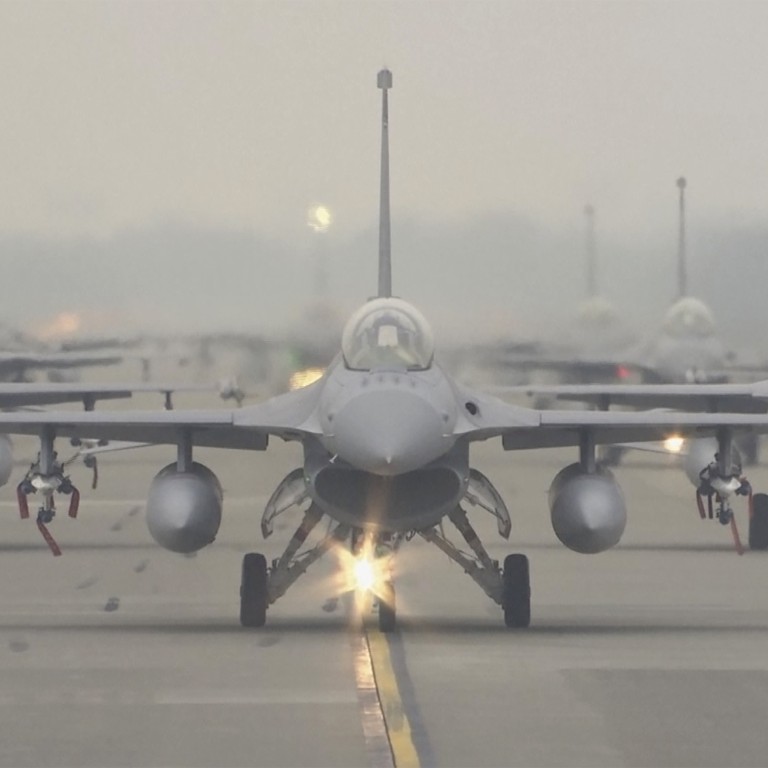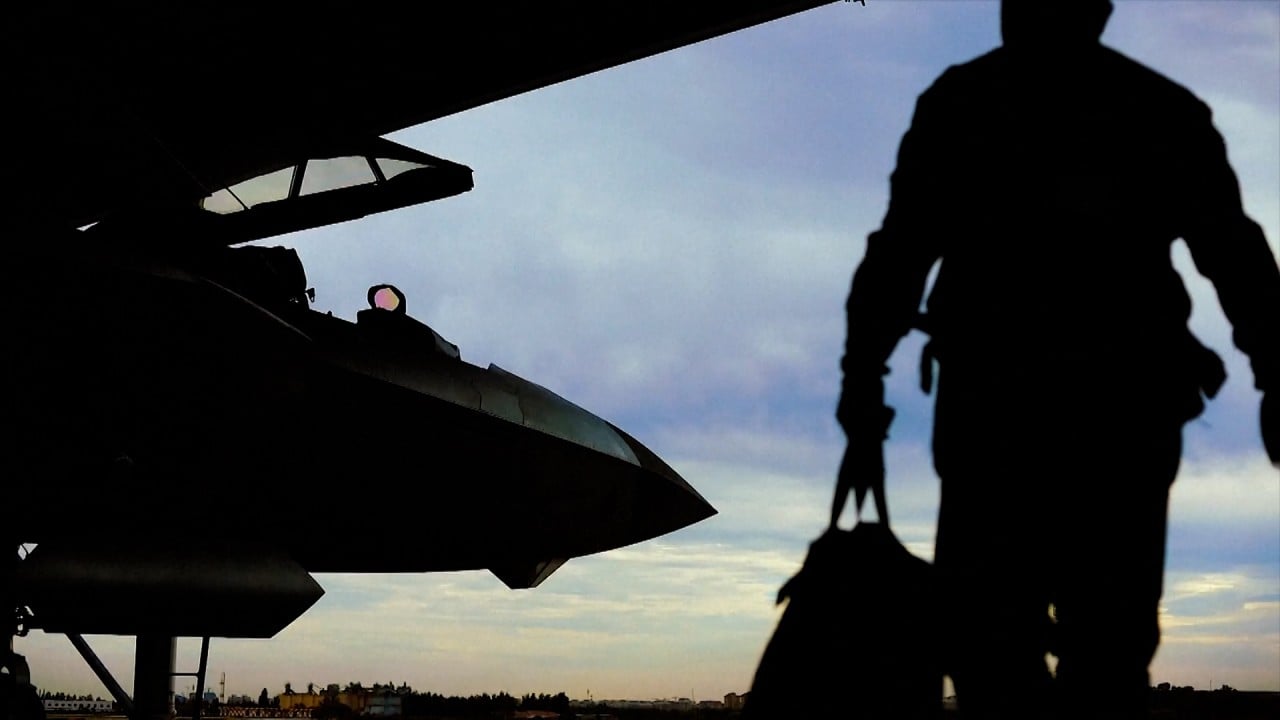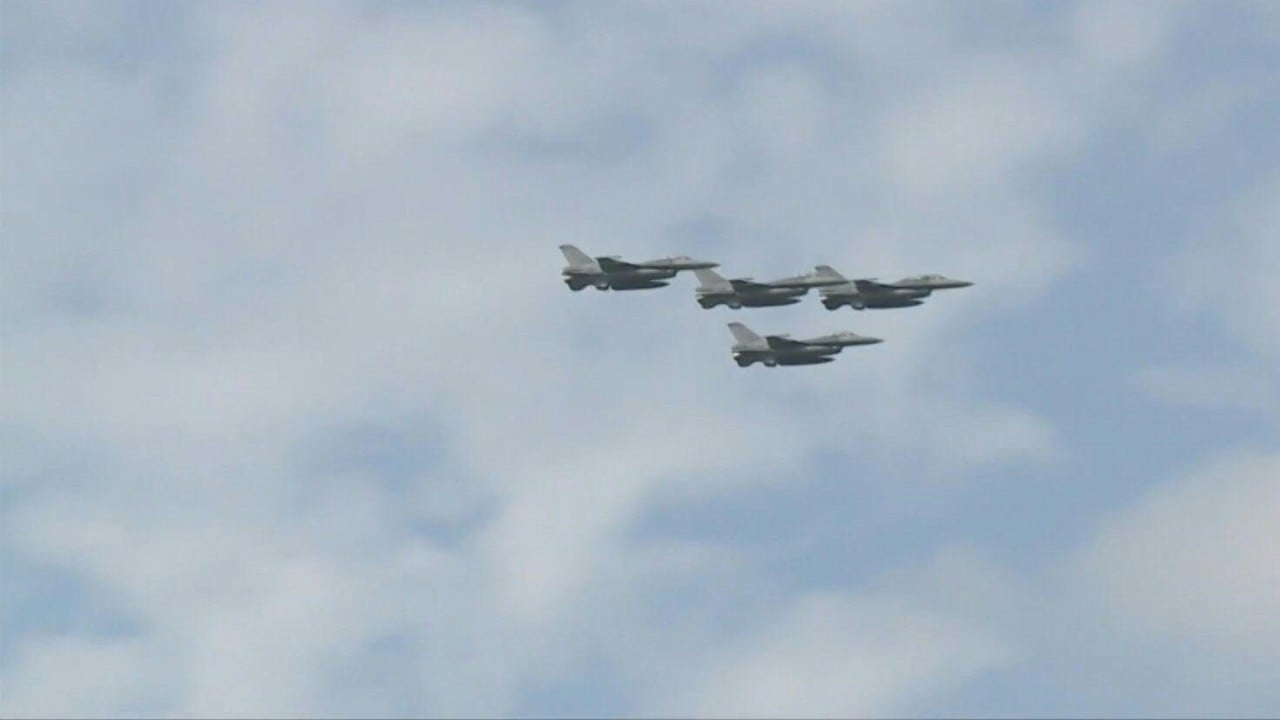
Why Taiwan’s F-16Vs are its best bet against the J-20 stealth fighter
- Tuesday’s accident involving one of the island’s upgraded jets a setback but the island is relying on the advanced planes to fend off an air attack
- Are the F-16V’s sophisticated weapons systems, intelligence sharing and advanced radar a match for the PLA’s showcase plane?
The J-20’s advanced radar and electronics, along with its integrated weapons management systems, are believed to be similar in concept to the US F-35. Its long-range missiles can travel 300km (186 miles) and its radar system can detect targets up to 135km away.
The upgraded F-16V has a better chance than its predecessors of detecting the J-20. Unlike earlier versions, it is fitted with an APG-83 active electronically scanned array (AESA) radar and other up-to-date avionics.
It is also capable of carrying advanced air-to-air AIM-9X missiles and the block 70s, which are expected to start arriving in 2023, will be driven by powerful F-110-GE132 engines, for better manoeuvrability in dogfights.
The F-16V is regarded as a fourth or even 4.5-generation fighter. It can share intelligence with consort planes through its detection system, while its superior night vision and automatic ground collision avoidance system make it capable of close and long-distance combat with the J-20.
When Taiwan takes delivery of the new planes – expected to start in 2023 and finish in 2026 – it will become the world’s biggest F-16 operator.
But military analysts said that if the F-16V were to take on the J-20, much would depend on the pilot’s ability to effectively operate the aircraft’s weapons and electronic warfare systems.
The plane that crashed on Tuesday was one of the first batch to be upgraded from the self-ruled island’s decade-old F-16s. It was the first loss of an F-16V, but Taiwan’s ninth major accident involving the F-16s since they were deployed in 1997.
So far, the Taiwanese air force has lost 10 F-16s and five Mirage 2000s through accidents, most recently in November 2020 when a single-seater F-16 crashed into the Pacific Ocean during a night training exercise offshore of Hualien, on the island’s east. The incident led to the grounding of all F-16s for a full examination.
The repercussions of previous crashes continue. Last month, a court in Taipei ruled the Taiwanese government should pay NT$4.66 million (US$167,442) in compensation to the family of Major Wu Yen-ting, who parachuted to survive an F-16 crash in 2013 but was killed in another one in 2018.
The purchase of 150 fighter F-16A/B block 20s from the US in the 1990s, along with 60 French Dassault Mirages, initially gave Taiwan air superiority over the PLA’s outdated J-7 and J-8 fighters, supplemented with a few imported Su-27s.
That changed with the rapid development of the J-20. The People’s Liberation Army Air Force has also added hundreds of home-made J-10, J-11 and J-16 series fighters to its fleet over the past 20 years.
While the PLA was expanding its capability, Taiwan was unable to acquire new advanced warplanes. A proposed US sale of 66 F-16 C/D fighters was cancelled in 2005, largely because of strong opposition from Beijing.
Further pressure has been placed on the Taiwanese air force in recent years by frequent approaches by PLA warplanes into the island’s air defence identification zone. Taiwan scrambles its fighters each time to intercept, exhausting the life of these planes.
In 2019, as Washington’s ties with Beijing deteriorated, the US increased its arms sales to the island and gave Taipei an opportunity to enhance its air force. The White House approved deals for 66 brand new F-16V block 70 jets at US$8 billion.
While Taiwan awaits delivery of the new fighters, Lockheed Martin has been upgrading its outdated planes since 2017 in an NT$110 billion (US$4 billion) contract.
So far, 64 upgraded jets have been deployed. They were unveiled at a ceremony in November attended by Taiwanese President Tsai Ing-wen, who said their addition would strengthen the island’s defences and its relationship with the US.
Additional reporting by Lawrence Chung




